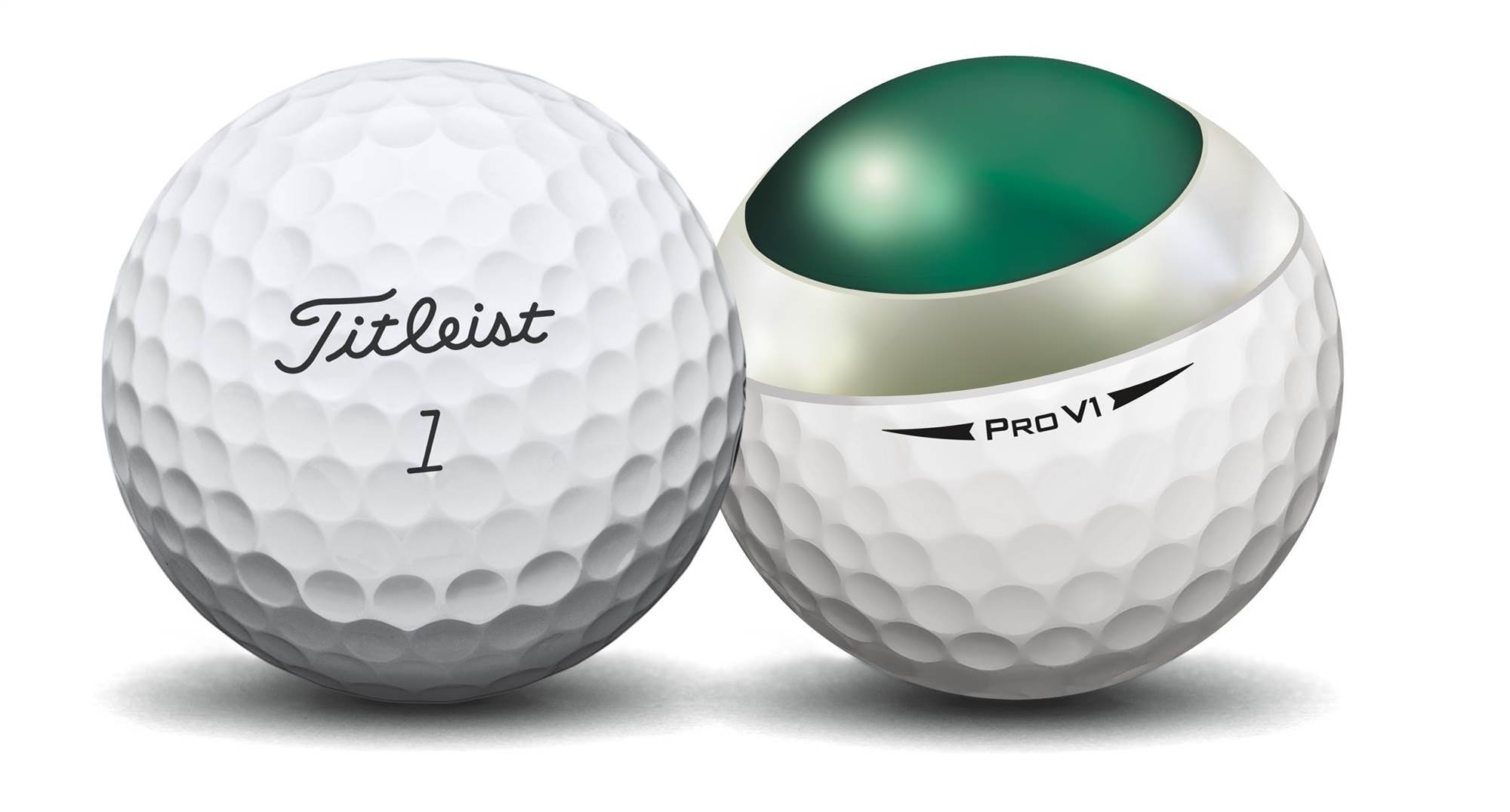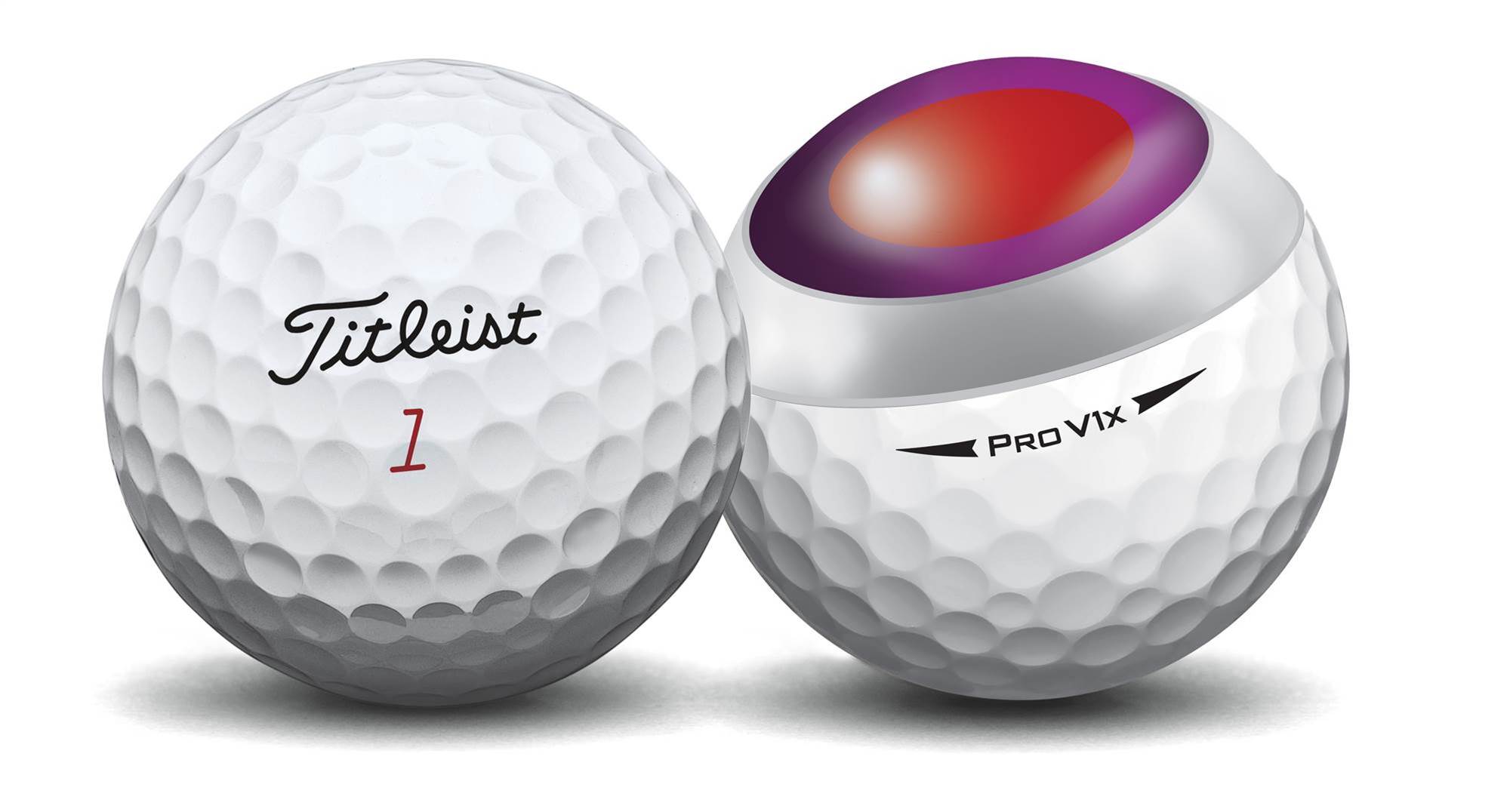As a long time Pro V1x ball player, I was keen to give both 2017 models a run to see if it was time to make a switch.
 TESTED BY: Brendan James, Golf Australia Editor
TESTED BY: Brendan James, Golf Australia Editor
(GA handicap 8.2).
COST: $79.95 (a dozen).
MODELS PLAYED: Titleist Pro V1 and Titleist Pro V1x 2017 models.
HOW THEY PLAYED: An old pro offered me some sage advice a few years ago … advice I have followed ever since.
“When you find a putter and a ball that works for you, stick with it. Never change,” he said. “That is, until you find something that is definitely better…”
 I’ve only had a handful of putters in 35 years of playing and for the past 15 years I’ve used the same ball for 90 percent of the rounds I have played. The Titleist Pro V1x has been my choice of ball in all that time, and I have used the softer Pro V1 at selected times when I have felt the course and weather conditions might be better suited to its use. I have dabbled with other balls boasting similar characteristics but I always go back to the Pro V1x because I know exactly what I’m going to get and it suits my game.
I’ve only had a handful of putters in 35 years of playing and for the past 15 years I’ve used the same ball for 90 percent of the rounds I have played. The Titleist Pro V1x has been my choice of ball in all that time, and I have used the softer Pro V1 at selected times when I have felt the course and weather conditions might be better suited to its use. I have dabbled with other balls boasting similar characteristics but I always go back to the Pro V1x because I know exactly what I’m going to get and it suits my game.
Having read about the technological changes that had been made to the 2017 models of the Pro V1 and Pro V1x, I wondered whether it might be time to see if, going forward, I could be a Pro V1 or, continue to be, a Pro V1x player.
I wandered into my local pro shop and bought a dozen of each and set off for the short game area to hit some chips and pitches.
Using the Pro V1x to start, there was no noticeable difference in terms of spin compared with the 2015 version. The urethane cover gives you enough grip and control over your short shots that make a good short game ball. The Pro V1, on the other hand, feels softer and offers far more spin. Ultimately, this meant I could be more aggressive with pitch shots and even bunker shots, where I aimed to have little run out after the first bounce.
I ventured over to the practice tee and hit each box of balls with a long iron, mid iron and short iron.
 As I expected, the ball flight of the Pro V1x was always much higher than the Pro V1 on well-struck shots. Surprisingly though this new Pro V1, with its slightly lower trajectory, was flying only marginally shorter than the Pro V1x. In my experience with past versions of the Pro V1, I have lost almost one club in distance to the Pro V1x. The 2017 Pro V1 model (pictured right) is much closer in distance to the Pro V1x than it has ever been, in my opinion.
As I expected, the ball flight of the Pro V1x was always much higher than the Pro V1 on well-struck shots. Surprisingly though this new Pro V1, with its slightly lower trajectory, was flying only marginally shorter than the Pro V1x. In my experience with past versions of the Pro V1, I have lost almost one club in distance to the Pro V1x. The 2017 Pro V1 model (pictured right) is much closer in distance to the Pro V1x than it has ever been, in my opinion.
The kicker here is that I found an extra three to five yards in distance across all irons with the new Pro V1x, which is understandable given its firmer and low-spinning attributes. The fact the Pro V1 is closer to it in distance now, with its softer feel, really piqued my interest.
When I moved onto the driver there was a greater difference in the ways the balls performed. I didn’t really need the assistance of a launch monitor to tell me I was hitting the high-flying Pro V1x marginally further than the 2015 model. It wasn’t a quantum leap in distance but, on average, my drives were five to 10 metres longer. That distance equates to one less club into a par-4, and brings shorter par-5s into range for two shots.
 By far the biggest surprise of the test was the driver distance and accuracy of the Pro V1. The 2017 model has been designed to spin less with the driver and this resulted in a slightly lower ball flight than the Pro V1x (pictured right). This, normally for me, would translate into much less distance but I lost a minimal amount of ground with the Pro V1 against the Pro V1x. In fact, my best drives with the Pro V1, were approximately the same distance as the median distance drives of the Pro V1x.
By far the biggest surprise of the test was the driver distance and accuracy of the Pro V1. The 2017 model has been designed to spin less with the driver and this resulted in a slightly lower ball flight than the Pro V1x (pictured right). This, normally for me, would translate into much less distance but I lost a minimal amount of ground with the Pro V1 against the Pro V1x. In fact, my best drives with the Pro V1, were approximately the same distance as the median distance drives of the Pro V1x.
Yes, the Pro V1 is not quite as long as the Pro V1x (although the margin has certainly closed) but the feel, sound and trajectory of the Pro V1 is something I could easily be seduced by.The Pro V1 has always offered soft feel and remains so, but with the 2017 version you don’t need to sacrifice distance to experience it.
THE DIFFERENCE BETWEEN ‘V’ AND ‘X’
The 2017 Pro V1 is a three-piece, multi-component technology with a Next Generation 2.0 ZG Process Core that delivers longer distance on all shots through lower long-game spin and faster ball speed, while maintaining the very soft feel and superior short-game performance that Pro V1 players demand. A new spherically tiled 352 tetrahedral dimple design produces a penetrating trajectory with even more consistent flight.

The Pro V1x is a four-piece, multi-component technology with a ZG process dual core, ionomeric casing layer, soft Urethane Elastomer cover system and new spherically tiled 328 tetrahedral dimple design, which produces a high trajectory with its most consistent ball flight.

Both models feature a soft Urethane Elastomer cover system formulated to deliver ‘Drop-and-Stop’ greenside control.
WHAT TITLEIST SAYS: Choosing between the total performance of Pro V1 and Pro V1x, golfers will notice differences in flight, feel and spin. Pro V1 flies lower with a penetrating trajectory and feels softer. Pro V1x flies higher, has a slightly firmer feel, and spins more on iron shots.
“No matter their playing ability, golfers have a simple choice when it comes to choosing the best golf ball for their game,” Titleist Golf Ball R&D Senior Vice President, Bill Morgan, said. “Either Pro V1 or Pro V1x will give you the best opportunity to shoot your lowest score.
“The decision purely comes down to flight, feel and spin. As we’ve told the pros, while you may consider yourself a ‘V’ or an ‘X’ player, we think this is a great time for you to re-evaluate both Pro V1 and Pro V1x to see which 2017 model is the best fit for your game.”
For more information about Titleist’s new Pro V1 and Pro V1x balls and to choose what is best for your game, visit www.titleist.com.au
Related Articles

Playing With... TaylorMade Qi35 Driver

New Release: Odyssey S2S Tri-Hot Putters













